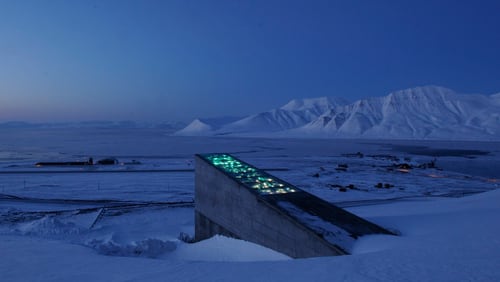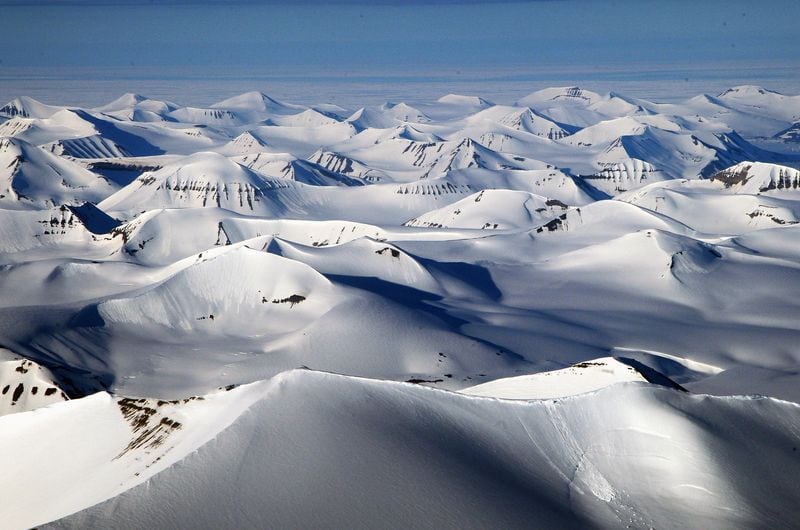Deep beneath an icy Norwegian mountain above the Arctic Circle lies the largest concentration of agricultural diversity on Earth.
The Svalbard Global Seed Vault, also known as the "Doomsday" vault or bank, is designed to save the world's crops and plants if disaster strikes.
Recently, after water flooded the facility and questions about the threat of climate change arose, the Norwegian government decided to plan a redesign of the vault’s structure.
Here are seven things to know about the vault:
Credit: Chris Jackson
Credit: Chris Jackson
What is the purpose of the vault?
If disease pandemics, asteroid crashes, climate change or any other global catastrophes were to ensue, the seeds stored in the Global Seed Vault could be the source for humans to regrow the crops needed for survival.
But the vault was actually intended as a secure storage space for samples of other crop and plant collections at risk.
Where is it?
The vault is located on the Arctic tundra island of Spitsbergen in Svalbard, Norway. The icy mountain housing the Seed Vault is called "Platåberget," or "plateau mountain" in English, according the Crop Trust.
The vault is about 400 feet deep inside the mountain.
» RELATED: How Georgians can watch the rare total solar eclipse this summer
What does it store?
More than 930,000 varieties of food crops are stored in the Global Seed Vault. It has the capacity to store 4.5 million seed samples with each sample containing about 500 seeds, so, according to the Crop Trust, a maximum of 2.25 billion seeds can be stored in the vault.
One room in the vault houses seeds for more than 150,000 different varieties of wheat.
How much did the vault cost to build?
The Global Seed Vault, which opened in 2008 was administered by the Ministry of Agriculture and Food on behalf of the Kingdom of Norway and reportedly cost approximately $9 million to build.
Who is in charge?
The Global Crop Diversity Trust (Crop Trust), Nordic Gene Bank (NordGen) and an international advisory council help manage the facility, its funding and operations.
Is climate change a threat to the vault?
When temperatures rose above normal in Spring 2017, permafrost meltwater runoff flooded the entrance of the vault and threatened the seeds stored in the vault.
» RELATED: Arctic sea ice shrinking to lowest levels ever for third straight year
"It was not in our plans to think that the permafrost would not be there and that it would experience extreme weather like that," Hege Njaa Aschim of the Norwegian government told the Guardian.
According to the National Oceanic and Atmospheric Administration, the Arctic has warmed by six degrees since 1900, with a big part of the warming fueled by man-made climate change.
But for now, the vault is safe, Norway government representatives announced in a press release.
The plan is to improve the vault’s construction to prevent any future incidents.
"Globally, the seed vault is, and will continue to be, the safest backup of crop diversity," the statement said.
Are there more vaults in the world?
Yes, there are as many as 1,700 versions of the vault (called gene banks) around the world, according to Time.
But the Svalbard vault is used a backup storage unit for the hundreds of thousands of varieties stored in other gene banks, some of which have been threatened in the past.
» PHOTOS: A sea change in the Arctic
In 2015, the gene bank in Aleppo, Syria, was threatened by the ongoing civil war and prompted researchers in the Middle East to withdraw some seeds, the Verge reported. Gene banks in Afghanistan and Iraq have also been destroyed due to war.
About the Author








